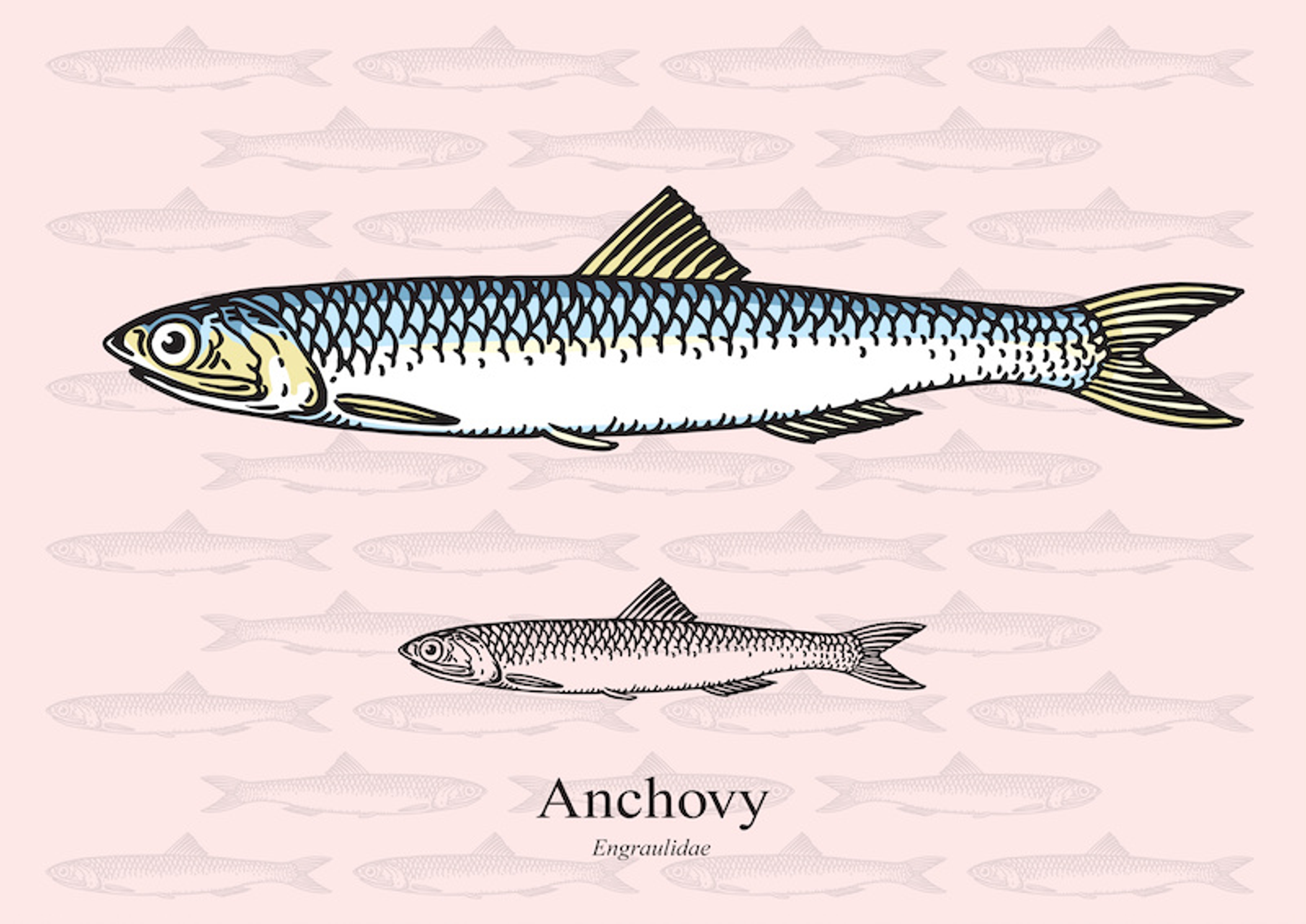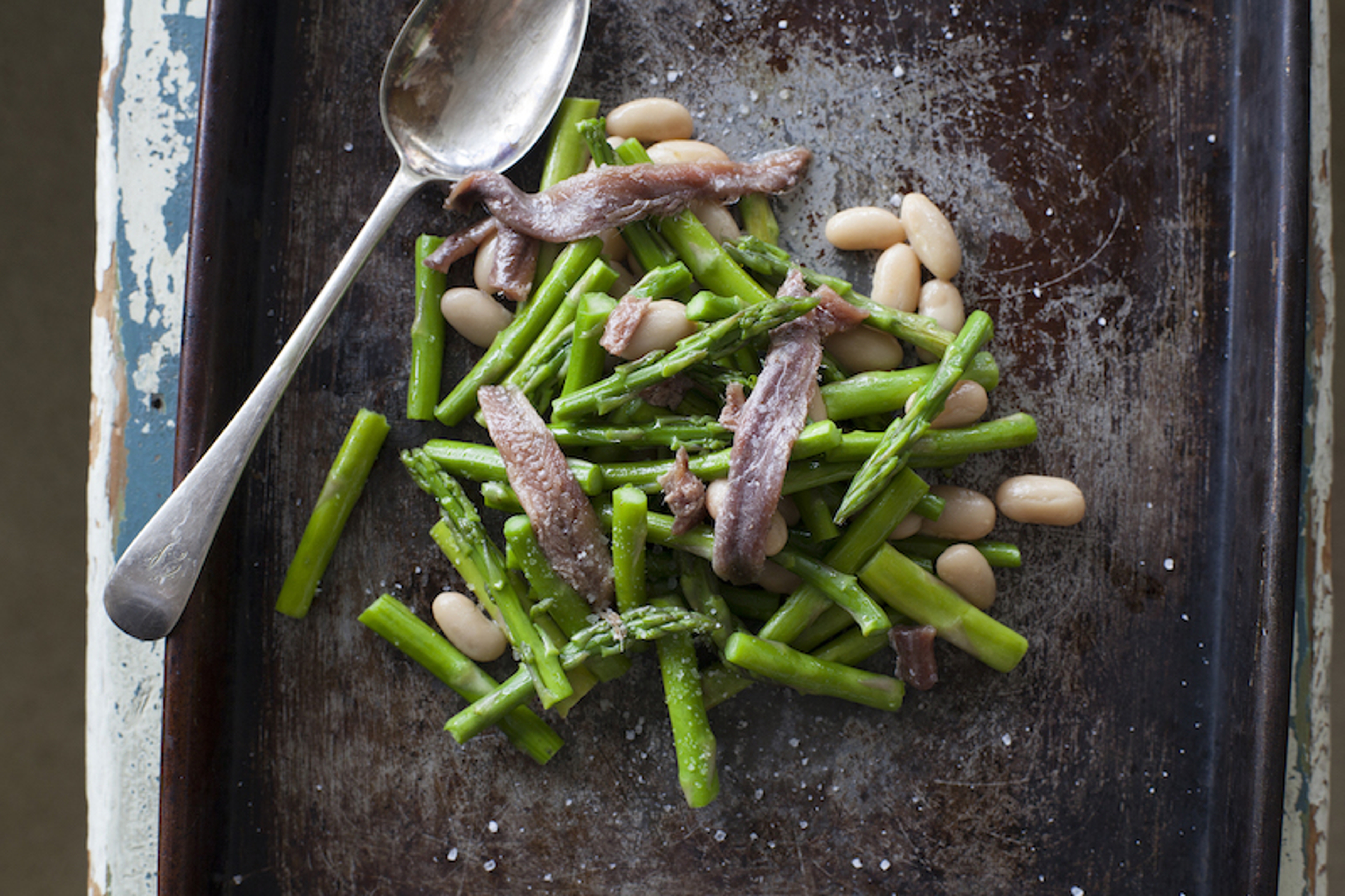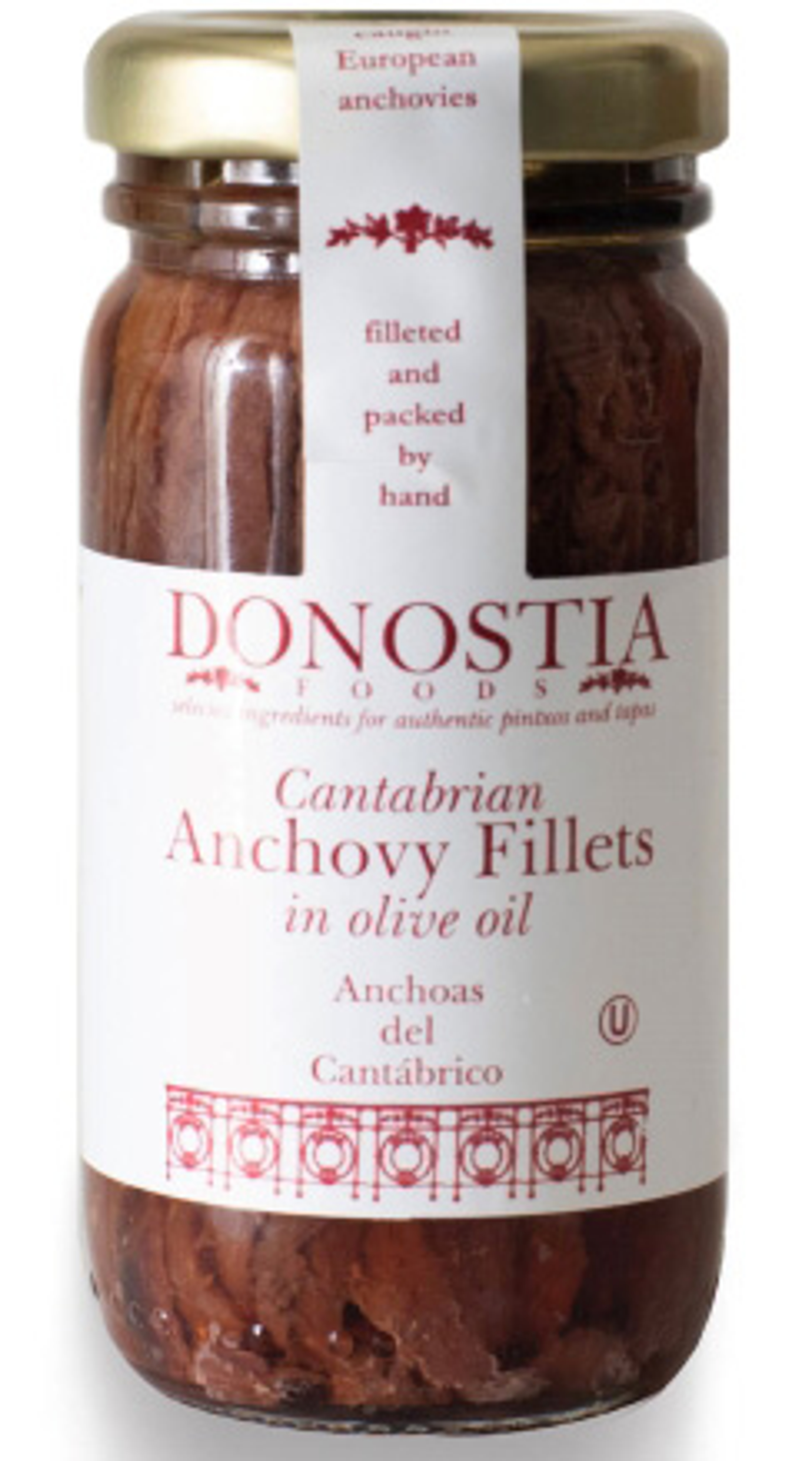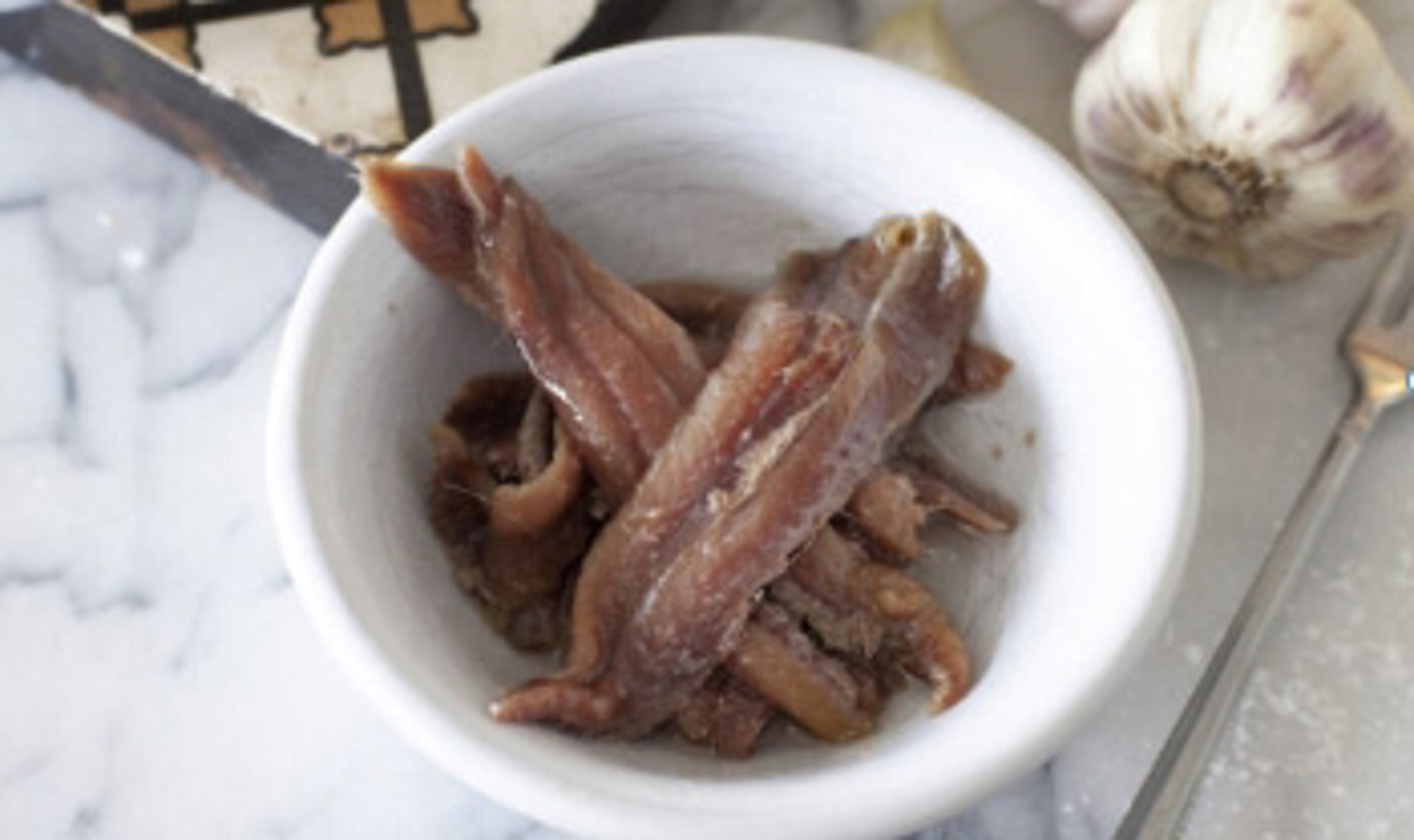Anchovies Deserve Respect
The small, humble anchovy features outsized flavor. Find recipes here.
Apr 27, 2023
Many people claim not to like anchovies. The only pizza topping they refuse is these little salted fish. But anchovies have a long and noble history outside the pizza parlor. The secret to loving this oft-misunderstood little fish is knowing their best culinary uses.
Are you, or people you cook for, known to pop a bit of charred fat from a steak in your mouth (we won't tell)? If so, anchovies are your new best friend. They boost the charred-steak richness you crave, technically known as umami, in any sauce.

In fact, anchovies are the one fish sophisticated meat-lovers must embrace.
Wait—you wouldn't dream of touching a steak? Then let anchovies satisfy your glutamate lust.
Umami? Glutamate?
Besides charred steak, cheese, ketchup, miso, truffle oil, ranch dressing, soy sauce, fish sauce and Worchestershire—and extra-flavorful vegetables like asparagus, tomatoes, mushrooms, and kelp—are all high in a chemical called glutamate.
Kombu dashi, a broth made from kelp (worth enjoying in its own right), is fundamental in Japanese cuisine. In 1908, the chemist Kikunae Ikeda of Tokyo Imperial University observed that its savory flavor could not be classified as sweet, sour, bitter, or salty. It was something else—which he named umami, or “essence of deliciousness" in Japanese. He eventually attributed that taste to glutamate.

Fermented anchovies have been the world's best loved glutamate-source for centuries. Nowadays their rival is tomato ketchup. Food snobs consider this sad. But you can spurn snobbery, and love both ketchup and anchovies.
Anchovy juice was the ancient world's elixir.
Italian cooks didn't need the concept of umami to learn that anchovies made their sauces delicious. Somebody figured it out and the cooklore persisted: Cook anchovies, garlic and tomatoes and in 15 minutes you will have a tomato sauce that seems as if its been simmering for hours with a bit of bacon.
That wisdom perhaps goes back to the ancient Romans, who bottled the juice of fermented anchovies as garum, a condiment regarded as seriously as fine wine is today.
Asian cuisines from the Phillippines to Thailand and Vietnam each have their own version. Food historians debate whether these condiments arose from Roman influence or soy sauce in China, but look at the label of a quality Vietnamese fish sauce like Red Boat or Son and you'll see two ingredients: anchovies and sea salt. Worchestershire sauce, two British chemists' version of the ancient favor bomb, adds vinegar and the like.
How to use anchovies.

It's fast and easy, yet classy. Don't forget that simple pasta sauce.
et bolder and try mixing anchovies with breadcrumbs to coat calamari.
Dress seared salmon in anchovy-garlic butter.
Italian Jews from the Piedmont region bordering France and Switzerland make Bagna cauda, a garlic-anchovy butter. Some cooks enhance it with red wine or cream and serve with bread or any vegetable.
Put anchovy-butter on your boneless leg of lamb or in an endive shallot goat cheese tart (fancy!)
Or you can slather your anchovy butter on toast before topping it with soft boiled eggs for breakfast.
Feeling calm, blessed with time? Slow-cook scrambled eggs with cream to make them custardy-soft. Place your eggs on your toast and crown it all with anchovy filets. For some Scottish reason, this is called Scotch Woodcock, though there's no bird in sight.

Why our anchovies?
Vital Choice takes no chances. Our anchovies are premium Cantabrian filets sustainably caught off the coast of Spain's northern Basque region. Connoisseurs consider these better than even the best Italian varieties.
Spanish tapas famously rely on high-quality canned seafood called conservas, including anchovies, and a number of fresh anchovy dishes are proud Spanish traditions. In short, the Spanish know their anchovies. Upon harvest, ours are packed in salt in large barrels to cure in a traditional "salmuera" process for five to six months. After being salt-cured, the fish are hand-filleted and jarred in olive oil. You'll get 18 anchovies on average in a jar and 600 mg omega-3s in every ounce.







